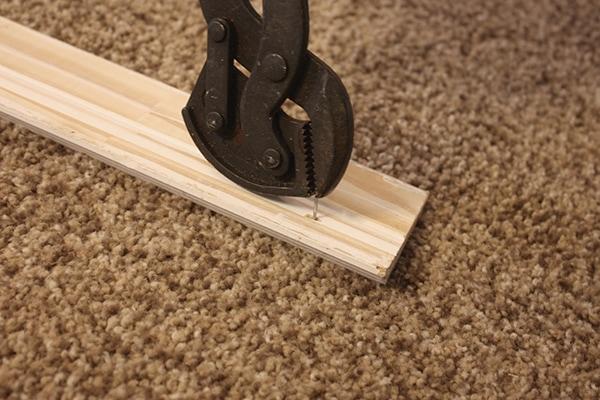How to Mark Wood Trim Molding—Correctly and Accurately
The first step in installing attractive wood trim is marking its length accurately. With a little practice and patience, you can get it right and end up with a neat cut every time. Here are best practices for nailing it—some of them centuries old.
Jesse SoutherlandUsing a folding rule or tape measure will almost always result in inaccuracy. There are times when you must use one, but what you’re after isn’t to cut trim to a whole number and a fraction—it’s to simply match its length to the wall, window, or door. Whenever possible, put the trim in position and mark directly on it. For short lengths of trim (under 4 feet, say), particularly baseboard, use something called a tick stick (more on that below) to transfer the length.

A tick stick is a length of scrap wood on which you record dimensions. Its most important features are that it’s straight and wide enough (and thick enough) so that you can mark it accurately. Erase the marks when you’re done and start over.
To use the tick stick on baseboard, butt the stick to an inside corner and mark the length of the wall from the inside corner to the outside, or hold it in place spanning two outside corners. Make your marks on the stick, and make a little tick mark on its edge to indicate the miter direction. (The illustration makes it clear.) You can also make a little sketch on the stick to help you match sections of wall to the pieces of trim you will cut.
The stick is especially helpful when you need to mark out fussy short runs of trim, such as when you’re dealing with multiple wall peninsulas or trimming around built-in cabinets. Marking a single stick and recording the data on it can help save bending, kneeling, and standing. It simplifies marking these complex runs of trim.
Now take the stick and your piece of trim to the miter saw. Transfer the marks on the stick to the trim, and then cut. With practice, the process becomes automatic: Mark the stick, mark the trim, cut the trim, nail the trim. Repeat.
Jesse SoutherlandUse a good quality pencil such as this one from Mitsubishi, a marking knife, or a penknife. When I have a big bunch of trim to cut, I even bring an electric pencil sharpener on the job, and I use it often. Mark a fuzzy line, make a fuzzy cut. Mark a crisp line, make a crisp cut.
Related StoriesThe Best Tools of 2022An Ode to the TL-29 Pocket KnifeThe Best Brad Nailer for Light-Duty DIY ProjectsYears ago, Neal Barrett—one of the best woodworkers in the country and a PopMech contributing editor—showed us a neat trick for marking door trim. You can mark the length of trim with the miter up (the point of the miter faces the ceiling) or the miter down (the point of the miter faces the floor). Both techniques accomplish the same task—that is, marking out a piece of door trim and then cutting it to the correct length. Really, it depends on how you like to work. I prefer the miter-down method, generally, because the trim’s length is established with a simple crosscut, not a miter cut.
But knowing about the technique helps when it comes to marking trim with a strongly curved or complex edge. It’s hard to both mark an accurate miter position on these and even harder to bring the saw blade down perfectly on it. It’s easier to cut the miter and then mark the crosscut using the miter-down method.







